The foods and flavours of Georgia reflect its geographic setting, described by food writer Darra Goldstein as a “Shangri-la of bounty.” Historically, Georgia played a key role in East–West trade routes, absorbing culinary traditions from various visitors. Over the centuries, local cuisine has blended with influences from Iran, Asia, Turkey, and the Mediterranean, creating a rich and diverse culinary identity.
Traditional Georgian cuisine, known for its fresh meats, vegetables, herbs, and spices, is one of the healthiest in the world and plays a vital role in the country’s culture. Each region contributes uniquely, with Eastern Georgia incorporating flavours from Iran, while Western Georgia leans towards Turkish and European influences. Despite these differences, the core recipes and cooking methods remain similar.
In this crossroads of East and West, culinary legends thrive, from the Caucasus peaks to Kakheti’s green valleys. Whether during a celebratory supra or a casual meal, Georgian cuisine shines brightest when shared with friends and family, celebrating the rich agricultural bounty of the land.
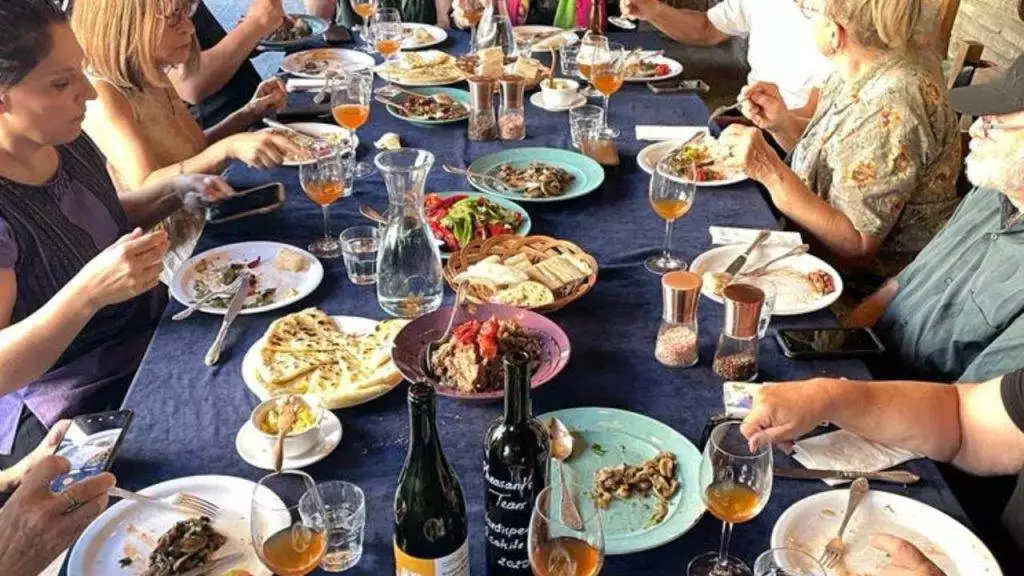
*A supra is a traditional Georgian feast essential to the country’s social culture. There are two types: the festive “keipi,” for celebrations, and the somber “kelekhi,” held after funerals. These gatherings feature abundant food, wine, and a toastmaster known as the “tamada,” who guides the toasts. Supras promote bonding and storytelling among friends and family, showcasing Georgia’s famed hospitality.
*Kakheti is a region in Georgia renowned for its wine production. It is often referred to as the heart of Georgian wine culture, featuring picturesque vineyards and a rich history of winemaking.
History of the development of Georgian cuisine:
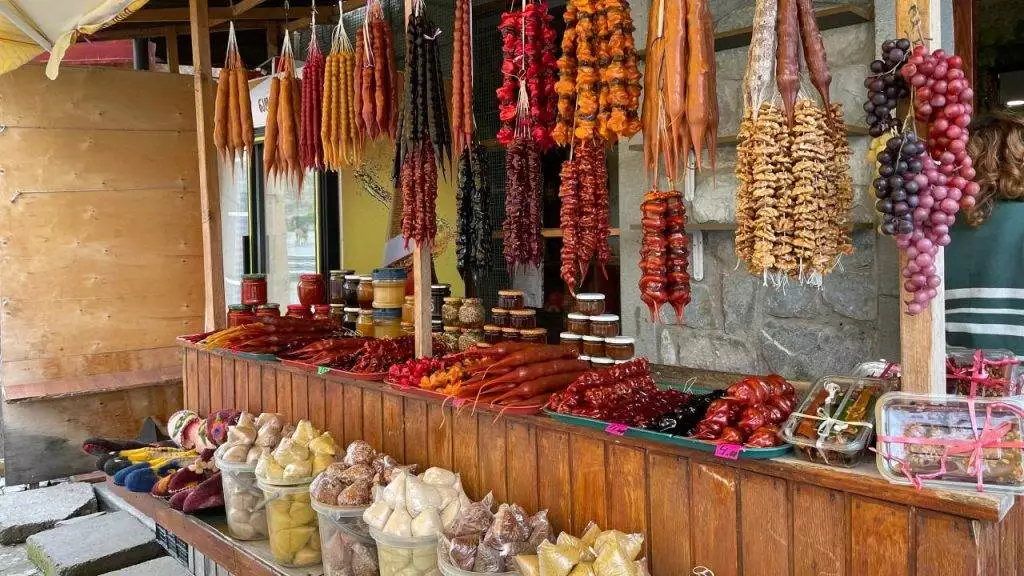
Many scholars trace traditional Georgian dishes like khachapuri, churchkhela, and khinkali back to the 2nd millennium BCE, originating from ancient tribes in present-day Georgia. These dishes have largely preserved their original recipes. In the Middle Ages, Georgia’s key trade routes enriched its cuisine with spices and herbs from India and Persia, leading to diverse meat and fish dishes and complex sauces. Despite political upheaval in the 17th century, Georgian cuisine evolved further, giving rise to iconic sauces like satsivi and refined cooking techniques. Under the Russian Empire and the Soviet Union, Georgian cuisine absorbed various cultural influences, gaining fame for its unique flavours. Today, it blends traditional recipes with modern trends, as chefs incorporate healthy ingredients and contemporary techniques. A notable aspect of Georgian cuisine is the impact of Orthodox Christian fasting traditions, which inspire a wide variety of meatless dishes that are now staples in vegetarian cooking.
*Khachapuri is a traditional Georgian dish consisting of cheese-filled bread. The leavened dough is shaped into various styles and filled with a mixture of fresh or aged cheese, often accompanied by eggs or other ingredients. Each region in Georgia has its own unique variation of this beloved dish.
*Churchkhela is a traditional Georgian candy shaped like a candle. It is made from grape must, nuts, and flour. Nuts such as almonds, walnuts, or hazelnuts are threaded onto a string, dipped in thickened grape must or fruit juices, and then dried in a sausage-like shape. This popular treat showcases the rich flavors of Georgian ingredients.
*Khinkali is a Georgian dumpling made from twisted dough filled with meat or vegetables and spices, introduced by the Mongols in the 13th century. Traditional khevsuruli filling includes minced meat, onions, chili pepper, salt, and cumin. The modern kalakuri version features herbs like parsley and coriander, with options for mushrooms, potatoes, or cheese instead of meat.
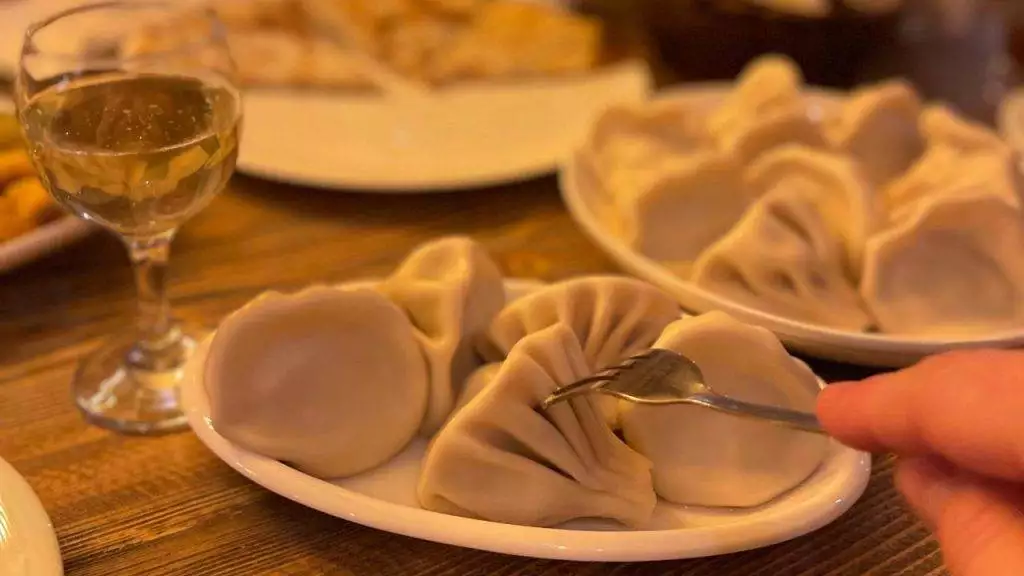
Elements of a traditional Georgian meal:
Fresh herbs– Purple basil, coriander, dill, fennel, mint, summer savoury, tarragon, parsley, garlic, and chili are often eaten as a salad to cleanse the palate at the beginning of a meal. Purslane, wild garlic, and beet greens are typically used in cooking.
Dried herbs.-Georgian cooks use many dried herbs, including barberry, bay leaf, caraway, cardamom, celery seed, cinnamon, cloves, coriander, fenugreek, and pepper. Dried marigold substitutes for saffron in Georgian cuisine.
Oils-Georgian cuisine is known for its use of ground walnuts as a key ingredient. Traditional recipes also call for walnut oil, sunflower oil, and corn oil.
Pickles– Every Georgian table—and every marketplace—makes room for delicious pickled garlic heads, green tomatoes, cucumbers, eggplant, and jonjoli, a dish made with pickled sprouts from a local shrub.
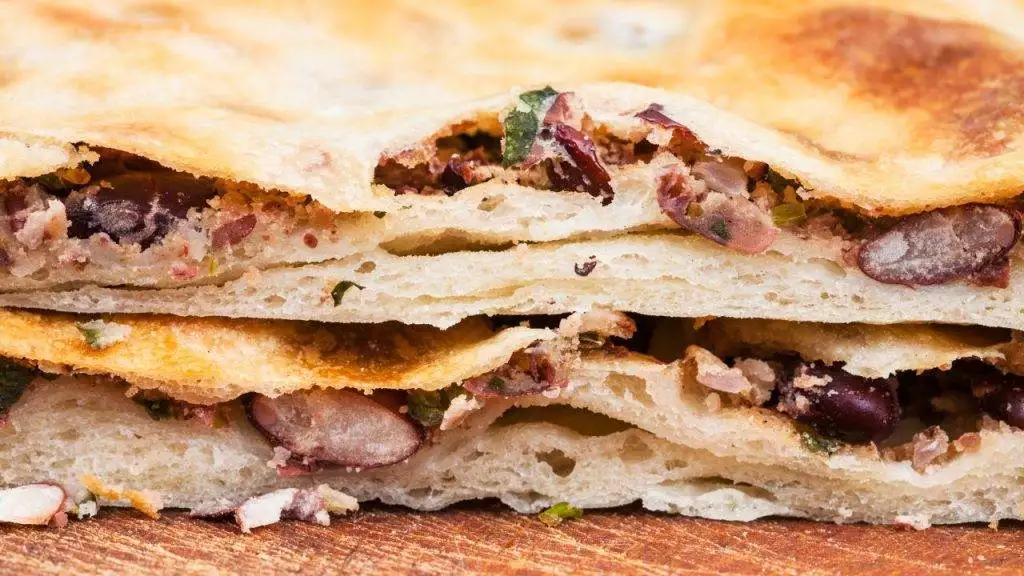
Breads and pastries.-Traditional Georgian breads vary in shape and are made from a variety of grains, but most—including tonis puri and shotis puri—are baked flat in large, rounded ovens. Mchadi (cornbread), chvishtari (cheesy cornbread) and ghomi (a porridge similar to polenta) are traditional breads made with corn. Lobiani is a bread filled with kidney beans, fried onions, and spices.
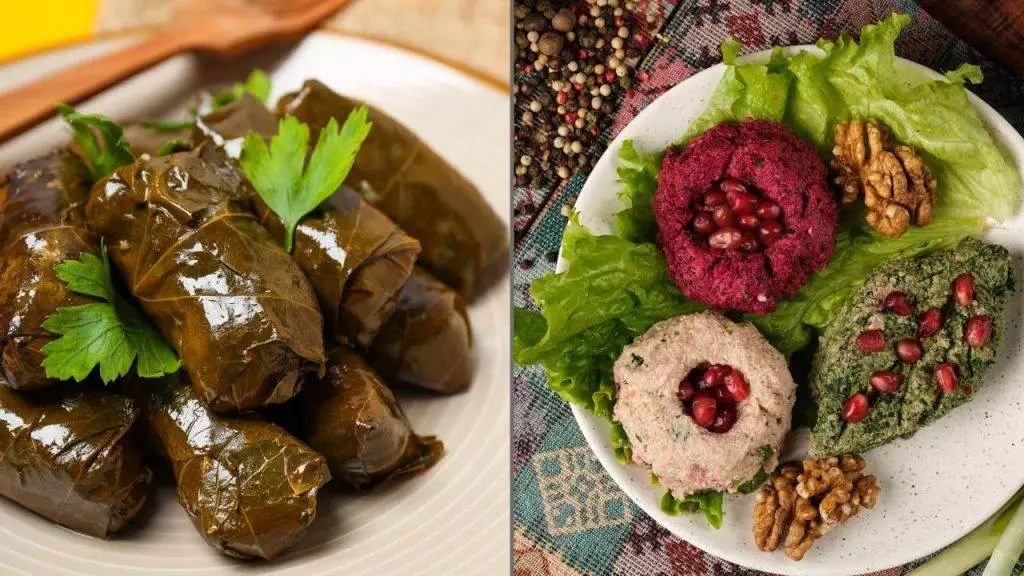
Vegetable dishes– Meals start with cold appetizers and vegetable dishes, including ajapsandali (eggplant stew), spiced kidney beans, green beans with yogurt, pkhali (chopped cooked vegetables mixed with walnuts and herbs, formed into balls, and topped with pomegranate seeds), and soko ketsze (cheese-filled mushrooms baked with butter in clay dishes).
Cheeses-Georgians enjoy a wide range of cheeses, the most common of which are Sulguni and Imeruli, moderately salty cow’s milk cheeses with a chewy texture. Sheep’s milk cheeses are also common, including the pungent Guda, as well as smoked cheeses from the mountain regions. In addition to the popular khachapuri bread, Georgians make several traditional dishes with cheese, including nadughi, a thin disk of Sulguni cheese filled with cottage cheese and mint.
Though it’s as important in Georgian cuisine as in European, cheese plays a different role on the Georgian table. Rather than being served as a snack or dessert, Georgian cheese is frequently a part of hot dishes. And it can be boiled in milk, roasted on a spit, fried in oil, baked in pastry, or flavoured with oil and spices to add dimension to first and second courses.
Soups and stews– Most common in homes and rural restaurants, Georgia’s rustic soups can be as thick as stews or casseroles. They include chrianteli (cold fruit soup), chikhirtma (lemon chicken soup), kharcho (meat and vegetable soup), and matsoni soup (soup made with tart yogurt and herbs). Perhaps the most popular soup is khashi, a garlicky soup made with tripe, bread, and milk—best known as a hangover cure.
Meat– Meat plays a central role in Georgian cuisine, featuring lamb, beef, poultry, and pork cooked in various stews, roasts, and grilled dishes.
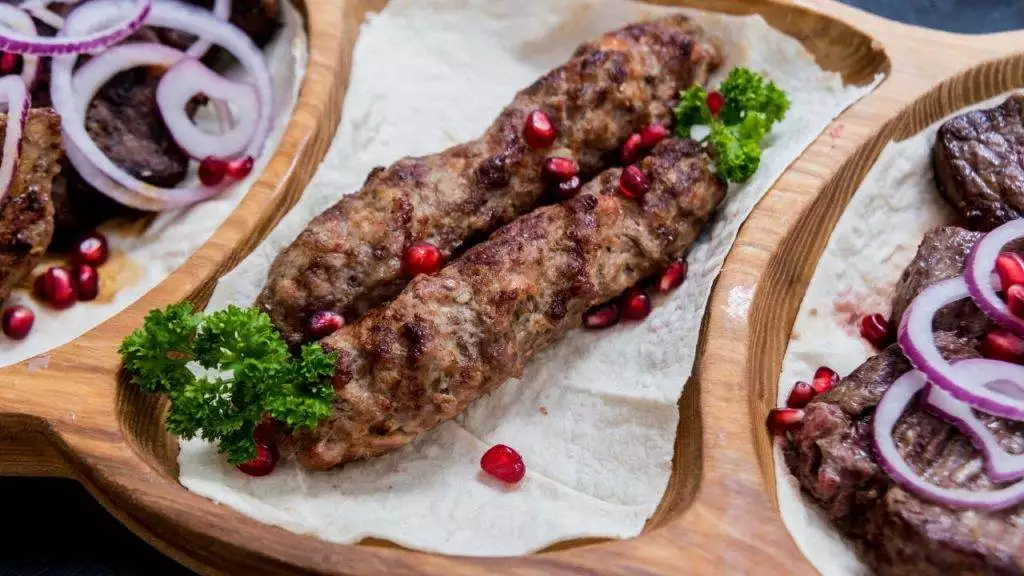
Fish-Outside of the Black Sea region, Georgia’s fresh fish options mainly include farmed trout, salmon, sturgeon, and small river fish. In restaurants, fish dishes are typically prepared simply—either grilled or roasted, often enhanced with lemon or a classic walnut or pomegranate sauce.
Sweets– Georgian sweet dishes are a delightful way to conclude any meal. Highlights include gozinaki, a crunchy honey-nut bar, and churchkhela, a candle-shaped candy made from nuts in a sweet grape juice coating. Other favourites are kada, buttery cookies, and pelamushi (or tatara), a pudding made from grape juice and cornmeal. These treats beautifully showcase Georgia’s rich culinary traditions.
Mushrooms-The High Caucasus Mountains of Georgia are loaded with mushrooms, distinct varieties unique to the region. During the mushroom season, farmers search for mushrooms and return with bags of them. Colourful varieties, such as the indigo milk cap and golden chanterelle, add vibrancy to forest floors. A popular dish here is mushrooms stuffed with cheese locally known as Soko Kecze.
A special note on a Georgian breakfast that our guests really enjoyed:

A typical Georgian breakfast features fresh local produce. Known for their hearty, savoury dishes, guests on our tours enjoy colourful platters filled with fruits, homemade jams, and refreshing juices made from local fruits. These fruits are naturally sweet due to their high glucose content. Cold cuts of meat are also served with freshly baked bread.
One of the most popular breakfast dishes is Khachapuri, which is bread filled with cheese. It comes in different types, such as Imeretian khachapuri (cheese inside), Megrelian khachapuri (cheese on top), and Adjarian khachapuri (boat-shaped with an egg). Guests also relished Chirbuli, which consists of fried eggs served with a flavourful sauce made from spices, caramelized vegetables, and walnuts. Scrambled eggs mixed with cheese and tomatoes are a common breakfast option as well. Rye bread, a staple in Georgia, is usually enjoyed with butter, cheese, or jam. The region’s fruits are very sweet, and the juices served are natural, without added sugar or preservatives. Cakes, especially those made with honey or plums, are often part of the breakfast spread. Lastly, guests can enjoy “buterbrod,” which is simply bread with butter and sugar, offering a straightforward option to start the day. Each breakfast experience lets our travellers taste Georgia’s culinary traditions.
Georgia in September
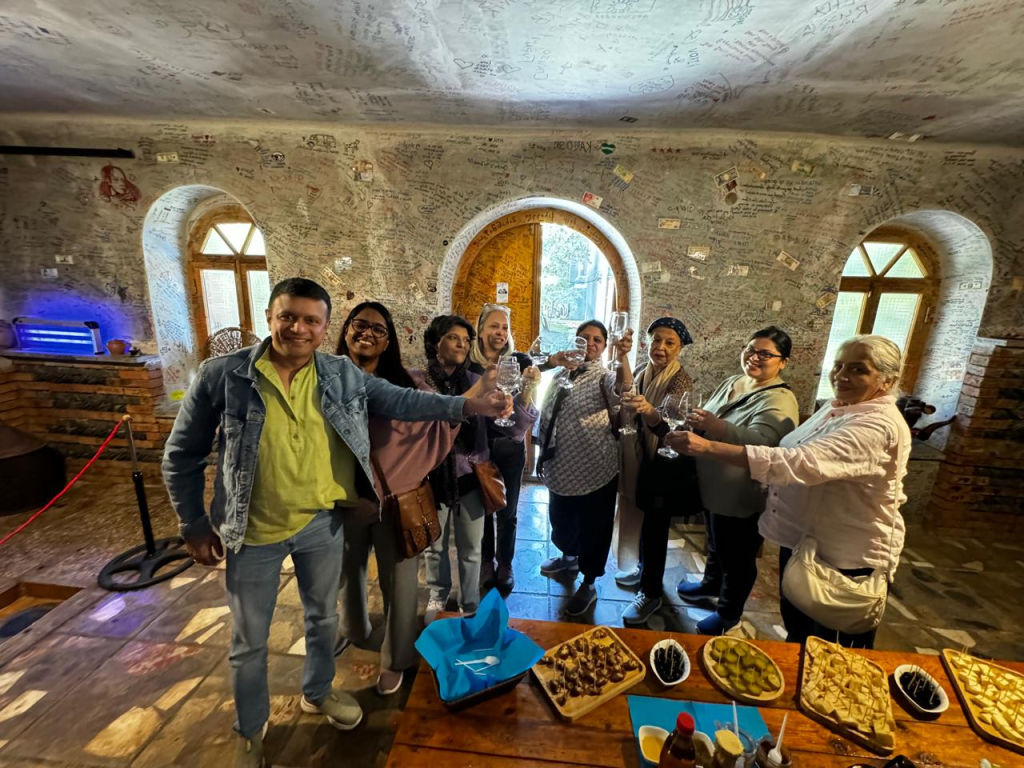
September is an incredible month to visit Georgia, especially for those interested in its rich food and wine culture. While the mountains might start to see some early snowfall, the lowlands remain pleasantly warm, making it ideal for adventurous outings. With minimal rainfall and the vibrant hues of autumn emerging, the scenery becomes a stunning backdrop for birdwatching along the Black Sea. Though many berries peak in the summer, some still thrive, transitioning into their fall season. For example, beautyberry showcases its striking magenta-coloured berries, attracting birds, while fall-harvested fruits like pears and apples start to make their appearance.
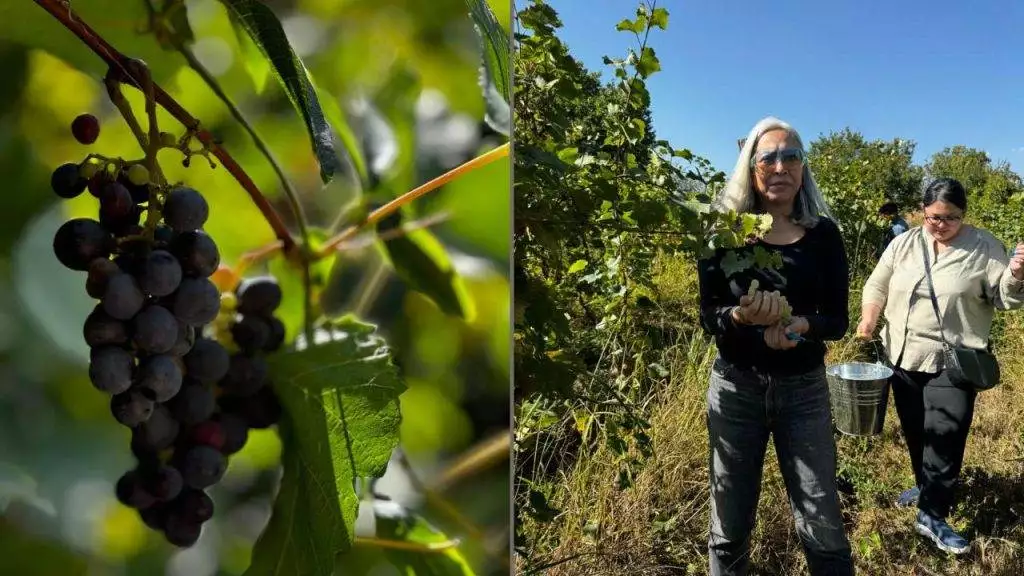
Our September tour, “Savouring Georgia: Food and Wine Tour,” offered a remarkable experience in the picturesque Kakheti region. Participants had the chance to delve into Georgia’s storied winemaking history, particularly through the ancient Qveri method. A highlight of the tour was engaging in Rtveli, the annual wine harvesting festival, celebrating local traditions with warmth and festivity. Guests also sampled churchkhela, a delightful traditional Georgian sweet treat.
Our guests enjoy their meals amid the bustling streets of vibrant Tbilisi, enveloped by the city’s lively atmosphere. Alternatively, they find themselves in the breathtaking mountains of Kazbegi, where the fresh mountain air complements the hearty dishes, or nestled in the charming, historic city of Kutaisi. The itinerary features an immersive dining experience, allowing guests to dive deep into Georgia’s culinary traditions while savouring robust Georgian meals in a variety of stunning locations.
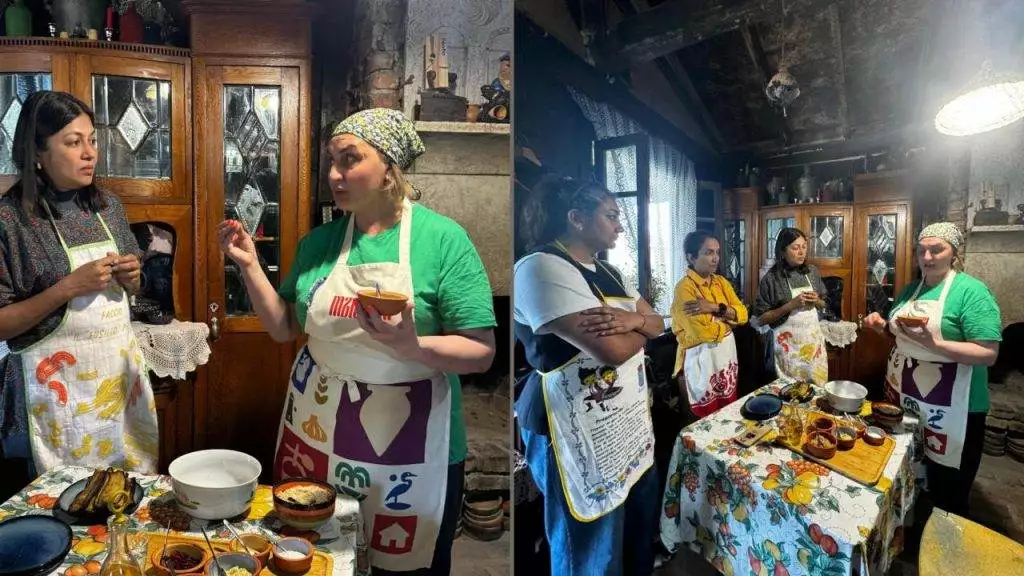
As they indulge in these delightful feasts, guests explore the profound cultural significance of food in Georgian society, where meals are a time for connection and community. In Kazbegi, participate in an interactive masterclass led by the warm and charismatic Ketevan Sujashvili, who shares her expertise in traditional Georgian cooking using fresh organic produce from the surrounding mountains. Guests not only learned to prepare authentic dishes but also enjoy a fabulous lunch showcasing the region’s culinary flair against the backdrop of the majestic Caucasus Mountains.
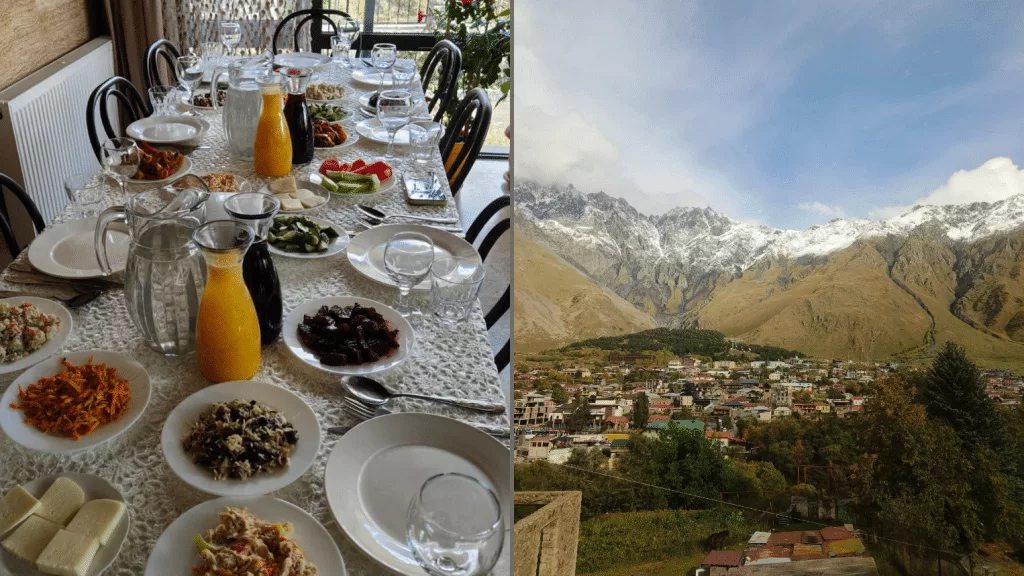
In Kutaisi, Maiko Kezereli hosts an intriguing session focused on the fusion of food and cultural narrative. A performance by traditional folk musicians enriches the atmosphere, creating an immersive experience as guests enjoy a selection of dishes made from farm-fresh ingredients that reflect local flavours and traditions. Each region showcases its own unique culinary delights, allowing guests to savour authentic Georgian cuisine while connecting with the rich heritage of this beautiful country. The trip concludes with a gala dinner featuring a selection of local Georgian favourites and a traditional Kartuli dance, leaving everyone with unforgettable memories from their immersive Georgian journey.
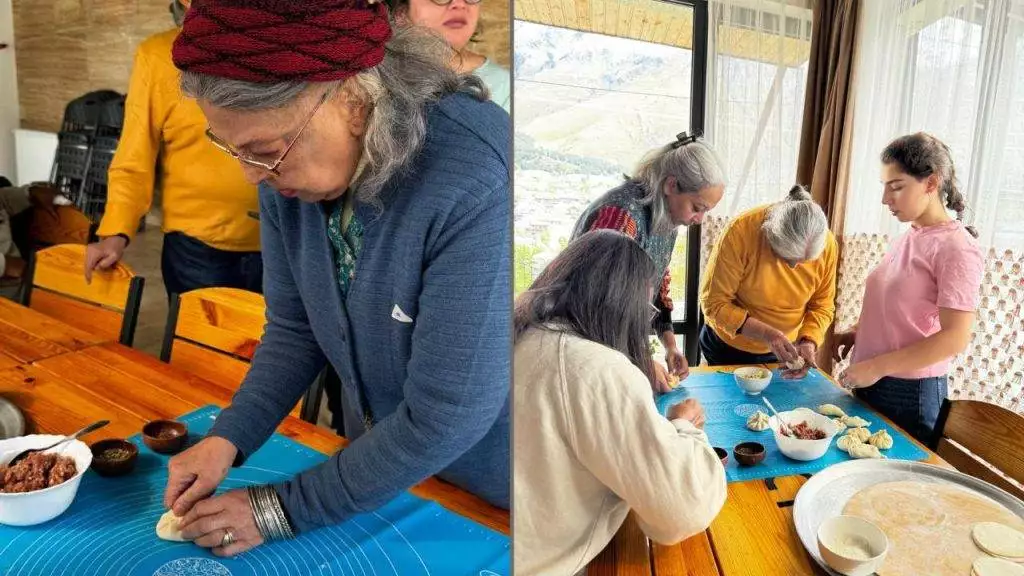
*Tbilisi is the capital of Georgia. The city holds both ancient and modern allure, making it the most loved tourist spot. The beautiful place is located along the banks of the Kura River and is enclosed by scenic mountains.
Kutaisi is a city in west Georgia. It has historical sites like Bagrati Cathedral, Gelati Monastery, and Motsameta Monastery. Kutaisi is culturally significant and has educated many famous Georgian writers and intellectuals.
*Kazbegi is a great place to visit for its beautiful scenery, historical landmarks, and cultural experiences. Key attractions include Gergeti Trinity Church, Truso Valley, and Mount Kazbek.
*Kartuli is a traditional Georgian dance that is characterized as a romantic or wedding dance, typically performed by a dance couple.

